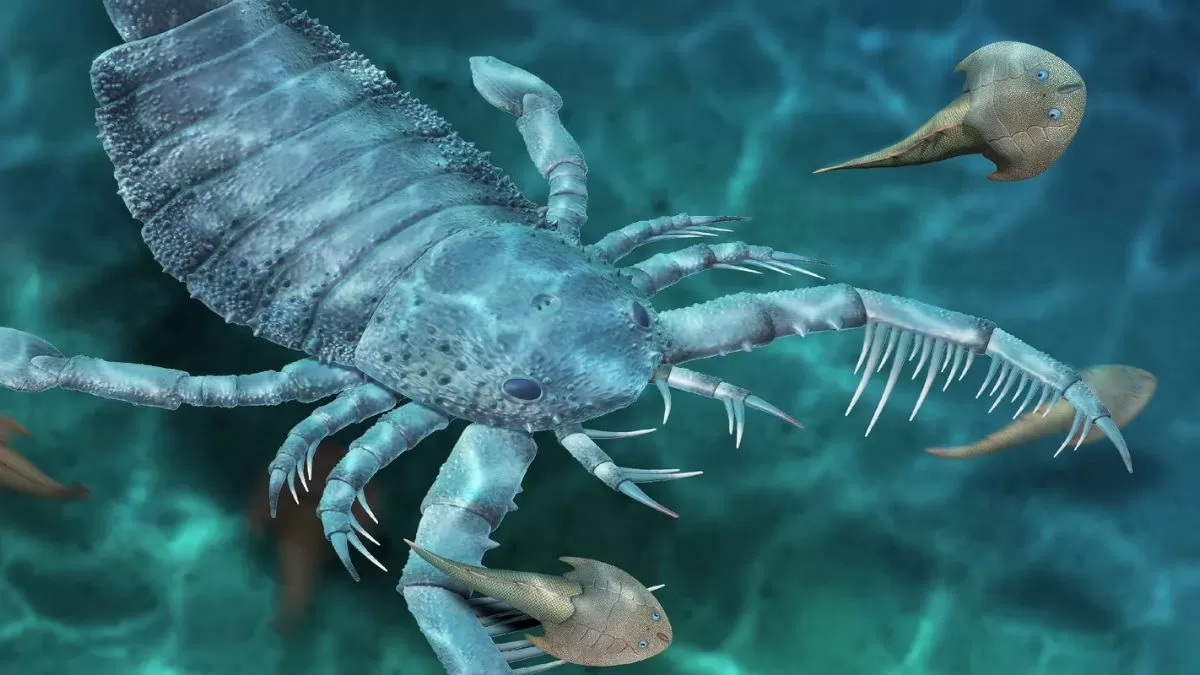Scientists in China have made a remarkable discovery, unearthing a 125-million-year-old fossil of a new species of scorpion, Jeholia longchengi. The fossil, measuring around 10 cm, has been found in the Yixian Formation and is significantly larger than most scorpions from the Mesozoic era. This discovery provides important insights into the food web of the Early Cretaceous period, suggesting that this scorpion species likely preyed on insects and small vertebrates. The fossil, in exceptional condition, is a testament to the valuable information that lies within our planet’s history.
The Yixian Formation, a geological formation located in Liaoning Province, China, is renowned for its exceptionally preserved fossils. These fossils, including various plants, insects, and vertebrates, have helped scientists gain a better understanding of the ecosystem during the Early Cretaceous period. However, the recent discovery of Jeholia longchengi adds to the already impressive collection of fossils found in this area.
The scorpion fossil, discovered by a team of researchers led by Dr. Haichun Zhang from the Chinese Academy of Sciences, has provided scientists with a rare opportunity to study the morphology and behavior of ancient scorpions. According to Dr. Zhang, this fossil is one of the most well-preserved scorpion fossils ever found, with all the soft tissues still intact. This is a significant finding, as soft tissue is often not preserved in fossils, making it difficult for scientists to fully understand the physiology and behavior of ancient creatures.
The newly identified scorpion species, Jeholia longchengi, is an important addition to the evolutionary history of scorpions. The species is believed to have lived during the Early Cretaceous period, making it one of the oldest known scorpion species. Its large size, measuring around 10 cm, is a distinctive feature of this species, as most scorpions from the Mesozoic era were only a few centimeters in length. This size difference indicates that Jeholia longchengi may have played a significant role in the ecosystem, likely as a predator.
The researchers also noted the unique features of the scorpion fossil, such as the presence of eight legs and a long tail with a stinger. These characteristics are typical of scorpions and have been preserved remarkably well in this fossil. Based on these features, scientists believe that Jeholia longchengi was a proficient hunter, adapting to its environment to effectively capture and kill its prey.
The Yixian Formation, where the fossil was found, is known for its diverse and well-preserved insect fossils. This suggests that Jeholia longchengi likely fed on insects as part of its diet. However, its large size and strong hunting capabilities may have allowed it to also prey on small vertebrates, making it a top predator in its environment.
The discovery of Jeholia longchengi provides crucial insights into the Early Cretaceous food web and the role that scorpions played in it. It also adds to the growing body of evidence that suggests scorpions have been an important predator in various ecosystems throughout history.
This finding also highlights the importance of preserving and studying fossils to gain a better understanding of our planet’s past. The Yixian Formation has proven to be a treasure trove of well-preserved fossils, providing valuable information about the Earth’s ancient ecosystems. With continuous research and discoveries, we can continue to unravel the mysteries of our planet’s history and the diverse life forms that have inhabited it.
The discovery of Jeholia longchengi is a testament to the skill and dedication of the team of researchers who made this remarkable finding. Their hard work and expertise have shed light on the evolutionary history of scorpions, and their discovery has the potential to lead to further discoveries and a deeper understanding of the Earth’s past.
In conclusion, the 125-million-year-old fossil of Jeholia longchengi is a significant discovery that has provided scientists with valuable insights into the Early Cretaceous period and the role of scorpions in ancient ecosystems. Its exceptional preservation has allowed scientists to study the morphology and behavior of this ancient species, bringing us closer to understanding the evolution of scorpions and their place in our planet’s history. This discovery is a reminder of the endless possibilities that lie within the Earth’s history and the importance of preserving and studying fossils for future generations.








